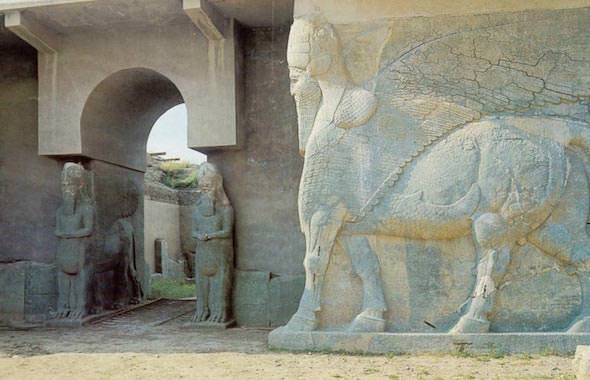Islamic State Is Making a Fortune Selling Ancient Artifacts
The cultural war being waged by the militant group includes a lucrative trade in antiquities.

The Palace of Ashurnasirpal II in Nimrud, pictured in 2007. Islamic State reportedly bulldozed the city in March 2015. (M.chohan / CC BY-SA 3.0)
The cultural war being waged by Islamic State provoked heightened international concern last month when the terror group captured the Syrian city of Palmyra — home to some of the most magnificent artifacts in antiquity.
Considering the preservation of ancient ruins to be a form of idolatry, Islamic State has destroyed scores of temples and countless historical artifacts in the Middle East, including ancient Assyrian sites in Nineveh in Iraq.
But, as The Washington Post reports, “they also have been quietly selling off smaller antiquities from Iraq and Syria, earning millions of dollars in an increasingly organized pillaging of national treasures.”
The report continues:
The group’s looting has become so systematic that the Islamic State has incorporated the practice into the structure of its self-declared caliphate, granting licenses for digging at historic sites through a department of “precious resources.”
“They steal everything that they can sell, and what they can’t sell, they destroy,” said Qais Hussein Rasheed, Iraq’s deputy minister for antiquities and heritage.
A calcareous stone statue is displayed at the Iraqi National Museum in Baghdad.
“We have noticed that the smuggling of antiquities has greatly increased since last June,” he added, referring to the month in which Islamic State militants took control of Mosul and large parts of northern Iraq.
At that time, militants also seized the ancient Assyrian capital of Nineveh. In a video released earlier this year, the Islamic State showed its fighters drilling off the faces of the mighty stone-winged bulls on the gates of the city. The militants also filmed themselves destroying statues at Mosul’s museum. But many of those items were actually replicas of antiquities kept in Baghdad, Iraqi officials said. Anything genuine and small enough to move was likely sold off or stockpiled by the militants, they said.
The Islamic State’s plundering began in a haphazard fashion when the extremists first gained a foothold in Syria. But the trade has become more organized as the group has conquered territory.
The Islamic State grants licenses for the excavation of ancient sites through its “Diwan al-Rikaz” — a governing body for overseeing resources in the “caliphate.” The body has a department for oil and gas, as well as antiquities, documentation from the group shows.
How much the Islamic State earns from the trade is difficult to estimate. Iraqi officials say it is the group’s second most important commercial activity after oil sales, earning the militants tens of millions of dollars.
The report’s full text can be read here.
There are currently 4,500 historical sites under the group’s control, according to the Paris-based Financial Action Task Force.
–Posted by Roisin Davis
Independent journalism is under threat and overshadowed by heavily funded mainstream media.
You can help level the playing field. Become a member.
Your tax-deductible contribution keeps us digging beneath the headlines to give you thought-provoking, investigative reporting and analysis that unearths what's really happening- without compromise.
Give today to support our courageous, independent journalists.






You need to be a supporter to comment.
There are currently no responses to this article.
Be the first to respond.